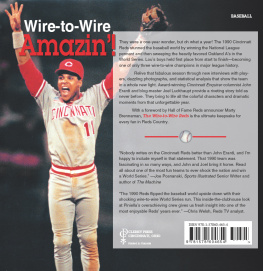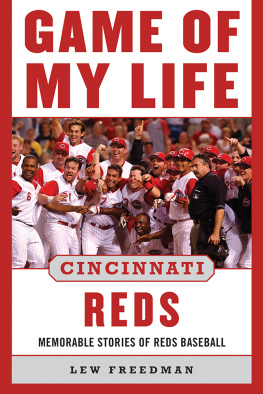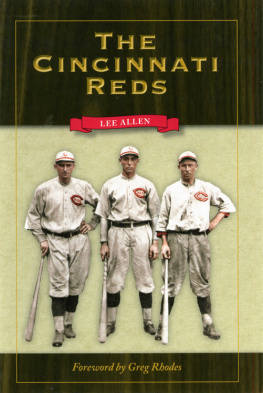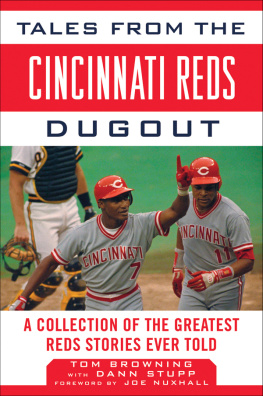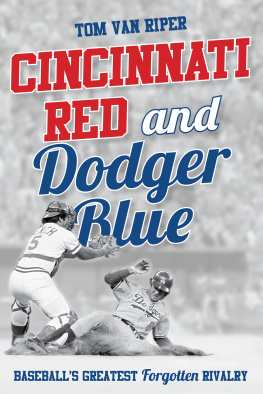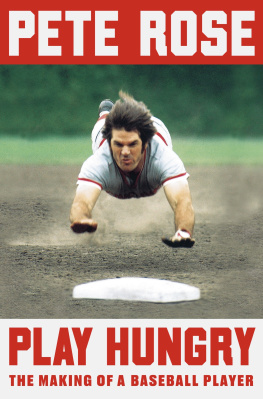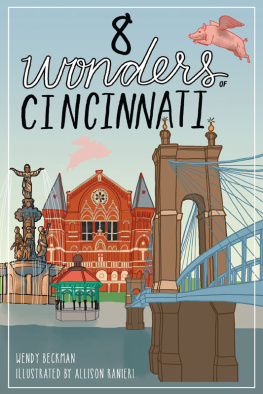
THE LOCAL BOYS
Hometown Players for the Cincinnati Reds
Copyright 2014 by Joe Heffron and Jack Heffron
All rights reserved
Published by Clerisy Press
Distributed by Publishers Group West
Printed in the United States of America
First edition, first printing
Editor: Tim W. Jackson
Cover and text design: Stephen Sullivan
Quotes from interviews with Greg Rhodes and Lonnie Wheeler appeared originally in Return of the Natives, in Cincinnati magazine. Quotes from interview with Jim Brosnan appeared originally in Go West, Young Fan, in Cincinnati magazine.
Cataloging-in-Publication Data is available from the Library of Congress
ISBN 978-1-57860-553-8
eISBN 978-1-57860-554-5
CLERISY PRESS
An imprint of Keen Communications, LLC
P.O. Box 43673
Birmingham, AL 35243
clerisypress.com
For Walt and Mary Heffron, who taught us to love the Reds,
and for Bob Heffron, who loved them with us .
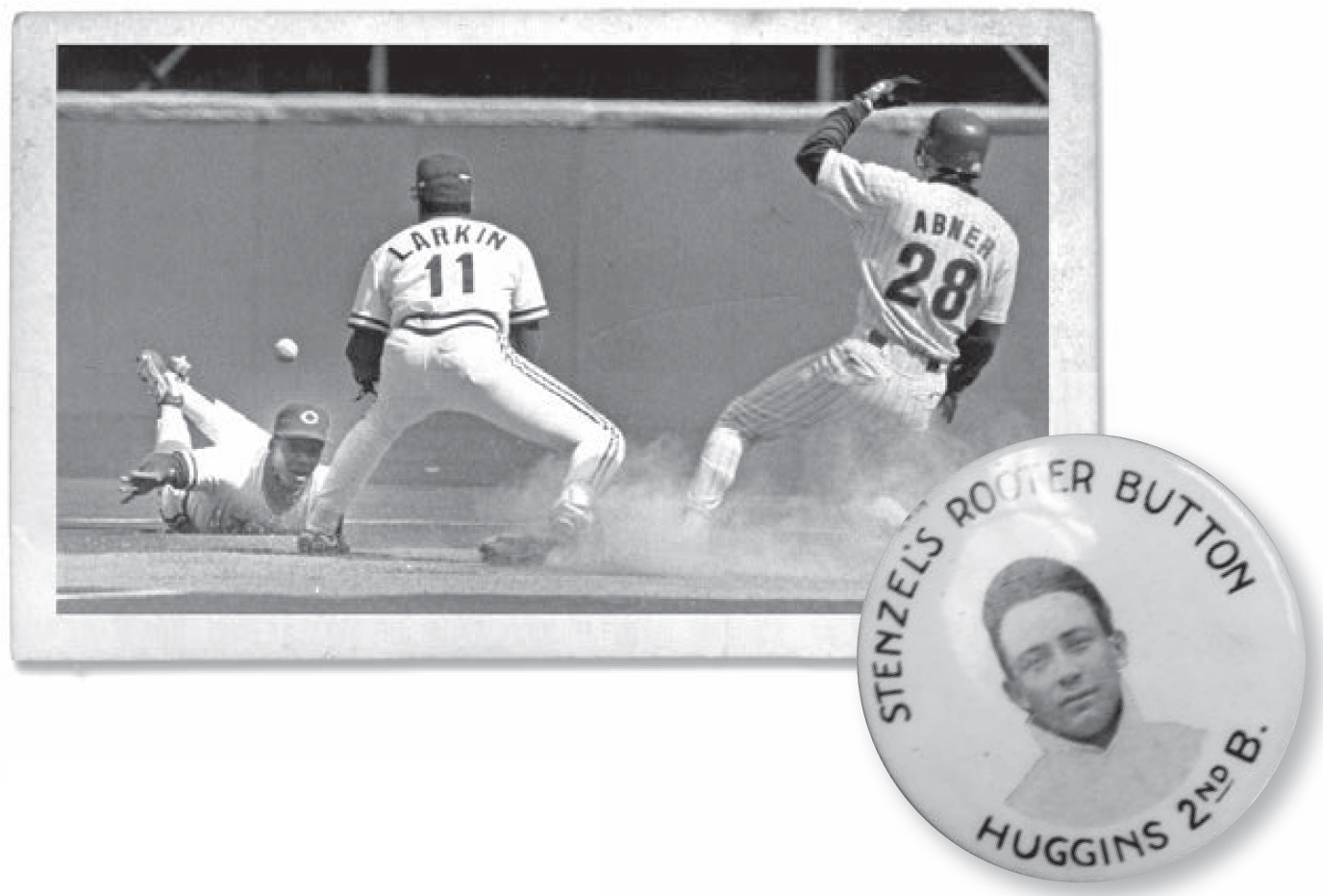
Table of Contents
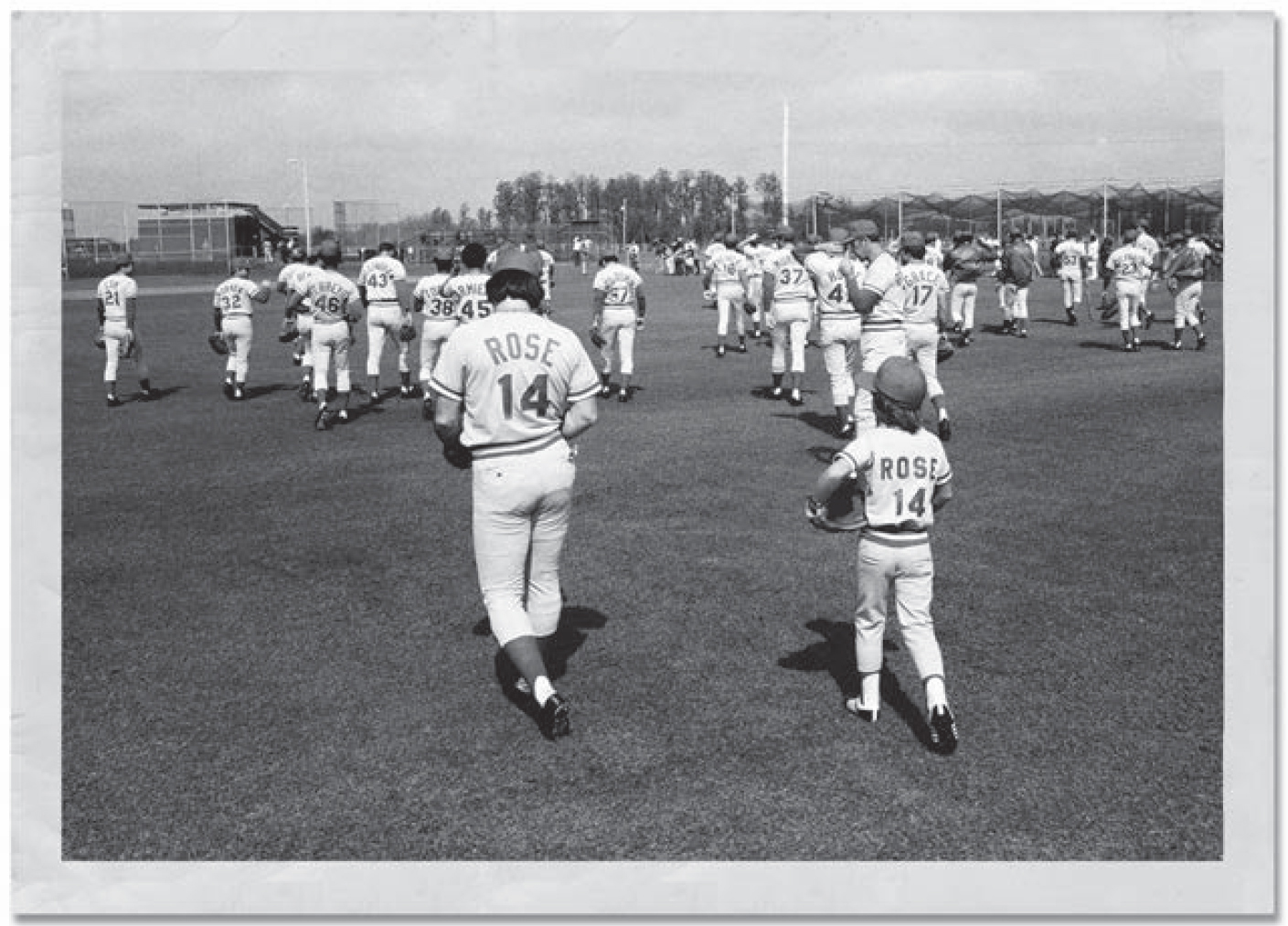
FOREWORD
by Chris Welsh
WHEN I HAD THE CHANCE TO COME BACK TO CINCINNATI AND PLAY FOR THE REDS, it became much more than simply playing Major League baseball. I was going to be a teammate of my boyhood hero, Pete Rose, and play alongside five other Cincinnati nativesDave Parker, Buddy Bell, Ron Oester, and Barry Larkin. Think of that! Six players on the field at Riverfront Stadium wearing Reds uniforms who all went to high school in Cincinnati.
It was so unusual and special to have so many local players on one team that US magazine shot a centerfold of all of us, along with Marge Schott and Schottzie, posed around her famous leather catchers mitt couch. That was a proud moment for Mrs. Schott. It was not the intention of General Manager Bill Bergesch to fill the roster with local players; that was a coincidence. But Mrs. Schott was parochial and she was very proud of her hometown boys.
The local guys on that team covered nearly two generations. Pete was at the end of a 24-year career, and Bell and Parker had more than 10 years in The Show. Ron Oester and I were about the same age, and Barry Larkin was a rookie. We all made an effort to play the game hard, using solid fundamentals, the way we learned to play growing up on the sandlots and dirt infields of Cincinnati.
Cincinnati has been called a little big city because of its hometown feel. So people in Cincinnati take pride in a hometown kid who makes it big. One reason Cincinnati grows so many Major League players is the quality of its amateur baseball programs. One of the drivers in quality amateur baseball in Cincinnati is the Midland Baseball organization, namely, Papa Joe Hayden. I think four of the six local Reds players from that 1986 team played for Midland at some point in the their amateur years.
I found out that it is not always easy playing for your hometown team. In terms of pressure, it can wear on you, especially during slumps. When you dont perform well, you feel like you are not only letting down the team and the fans, but also your family and close friends, who seem to live and die with every at bat or pitch. I knew that every day someone would stop my mom or dad and offer congratulations or condolences, depending how I pitched in my previous game. Knowing that added a little extra incentive and some extra pressure. But soon the novelty of the hometown boy makes good wears away and you approach the game as a professional. You have no choice. I mean, the free ride doesnt last long. I had a mediocre season and was released along with Pete Rose in the following November. The only difference was that Pete was brought back to be manager and I was looking for a job. Honeymoons dont last forever. But it was great while it lasted.
One hometown player who will always hold a special place in the hearts of Reds fans is Joe Nuxhall. He played his first Major League game at age 15, of course, and stayed with the Reds nearly his entire life. He loved to promote the local guys because he knew how special it is to play for your hometown team. I remember a game in 1981 when I pitched a shutout against the Reds and Joe invited me on his famous Star of the Game show. I knew then that I had made it big. After all, I spent my youth listening to Reds games on the radio and rarely missed his post-game show. In the interview with me, Joe asked more about my roots in Cincinnati than the game I just pitched. That showed me he had a deep respect for his hometown and Cincinnati ballplayers. We talked, laughed, and rambled, and I kept pinching myself to make certain I was really on Joe Nuxhalls show.
The moment that stands alone for me as a Red was July 5, 1986, when I pitched a complete game win against the Philadelphia Phillies. I hit a home run in that game, and as I trotted the bases and rounded third I looked up and saw Pete Rose. He was waiting at home plate with my jacket. My awareness became fuzzy and my jog to the plate turned magical. There he was, Pete Rose, my boyhood hero, everybodys hero, the player who I most admired growing up in Cincinnati, waiting at home plate to give me a high five for hitting a home run. Just for a moment, time stopped as a Cincinnati Red.
INTRODUCTION
ITS A COMMON DREAM AROUND HEREfrom the tiny towns that cling to the river-banks of Northern Kentucky, to the farms of southeastern Indiana, to the streets of Cincinnatis urban ring, to the sprawling suburbs spread out, across, and well beyond the citys seven hills. In the past nearly 150 years, probably a million boys from these places have vowed, Someday Im going to play for the Reds.
Since 1869, when the Red Stockings, the worlds first professional baseball team, played its inaugural season, 105 local boys have achieved that dream. Some found great successHall of Famers Buck Ewing and Barry Larkin come to mind. Others only took a sip of the proverbial cup of coffee. Like Moonlight Graham in the film Field of Dreams , Eddie Hunter, for example, played just one inning and never got to bat. Some began their careers here but went on to success elsewhere. Still others were stars for other teams before coming home for a last hurrah. Most fell somewhere in between.
In the teams long history, only once have more than three seasons passed without a local guy wearing red. That time is now. Since Junior left late in 2008, the team has not had a player from the Greater Cincinnati area suit up and take the field.
Only 15 seasons in franchise history have lacked a local playera staggering feat. No statistics are kept on the subject, but a smart betting fan might want to place money that no other market can make the same claim. Why? Well, in part, because those markets dont care as much. They dont place the same premium on featuring local players. I dont know if, per capita, there have been more in other markets, but Id say theres more pride in those players here, Greg Rhodes, the Reds team historian, told us. In bigger markets you dont get that same sense of ownership.
Though one of the smaller markets in Major League baseball, Cincinnati has produced far more than its share of big leaguers, and many have played, at some point in their careers, for the hometown team. Though more than two million people live in the area, the city retains a certain small-town sense of itself. And it holds in high regard a local boy in a Reds uniform. No dream is better understood as hoping to play for the Reds.


